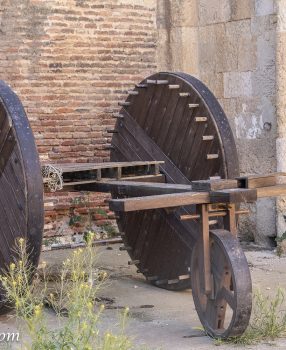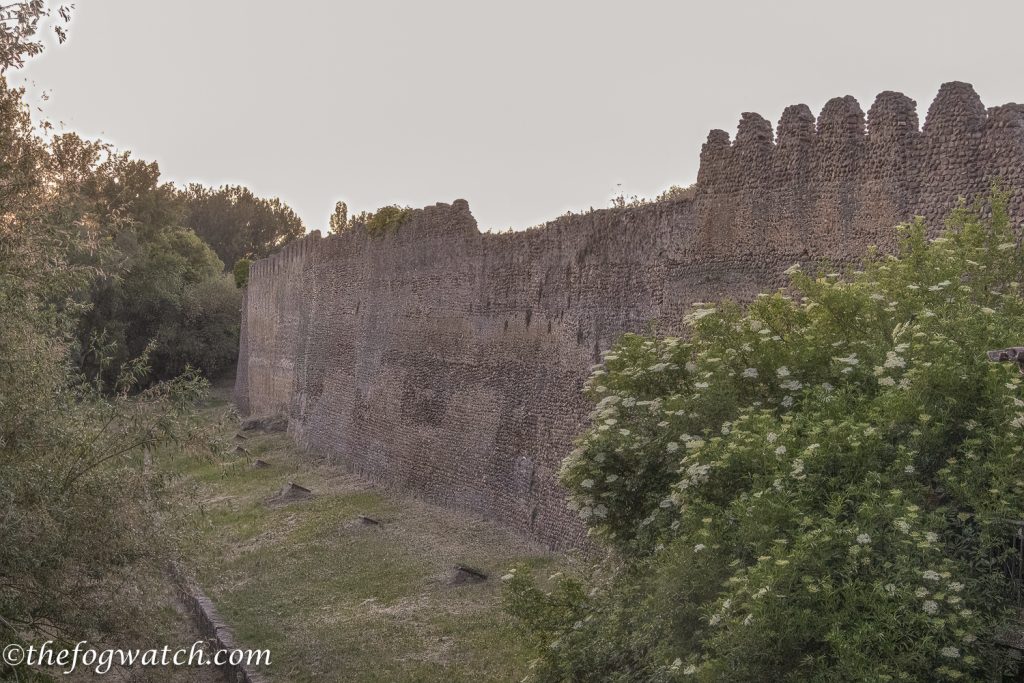Outside the church stands a sculpture depicting two penitents draped in their hoods to signify that their penance is for God and not for public display. It bears an inscription in Spanish: “In the year of our Lord 2012, this monument in honour of Holy Week in Sahagún was presented by the Brotherhood of Jesus of Nazareth and his father San José.” Indeed, in Holy Week at Easter, you will see processions including penitents dressed in a similar fashion. People from the US often interpret the penitent’s garb as Ku Klux Klan regalia, but it bears none of that connotation in Spain.
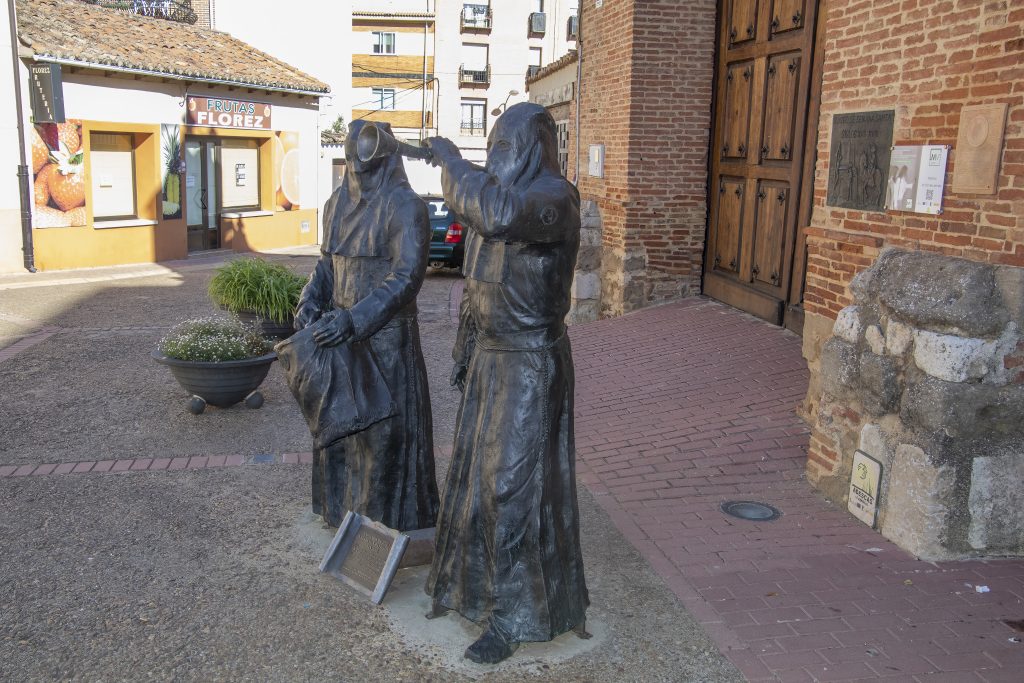
We had a little time to wait in Sahagún as Sharon’s sciatic pain was not improving. So we had decided to taxi to El Burgo Ranero and rest. So with a bit of time to wait before we could get a taxi, we decided to explore Sahagún a little further
While walking around the town, we found a ruined church in which nestled a strange cart-like contraption. It looked like something our of Leonardo da Vinci’s notebooks, but I suspect it was a processional cart, perhaps used to carry a statue of the Madonna or perhaps a patron saint through the town on holy days.
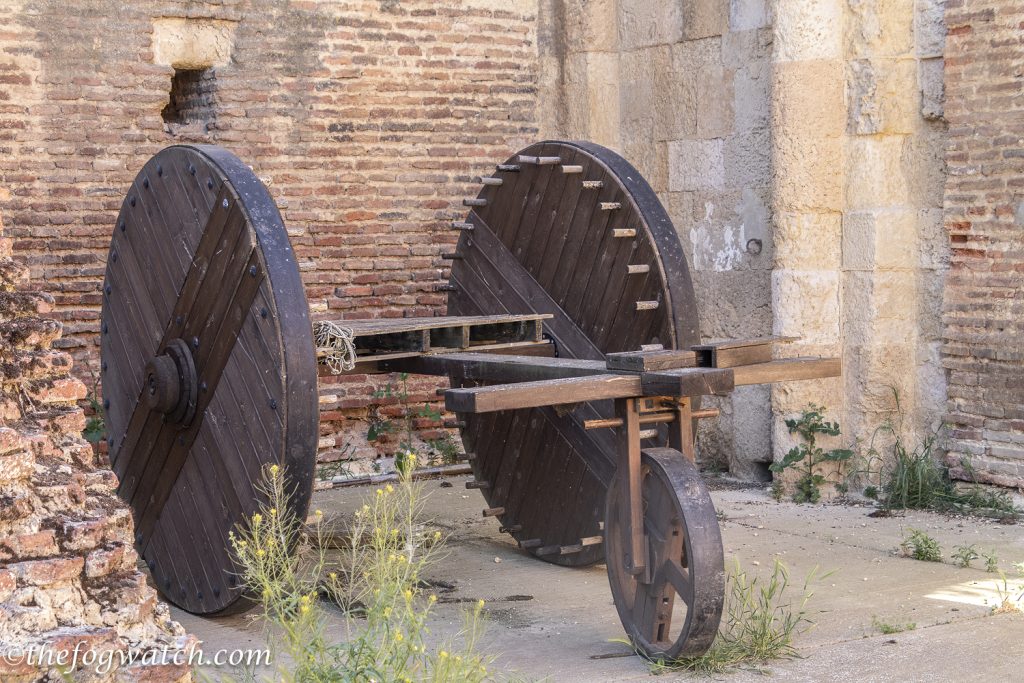
In the meantime, it waited, parked amongst a ruined church. I wondered if the pegs on the rear wheels would drive a rotating platform as the cart was pulled along by penitents dressed in robes and wearing conical hats. Or maybe the wheels were salvaged from an old mill with the pegs still attached.
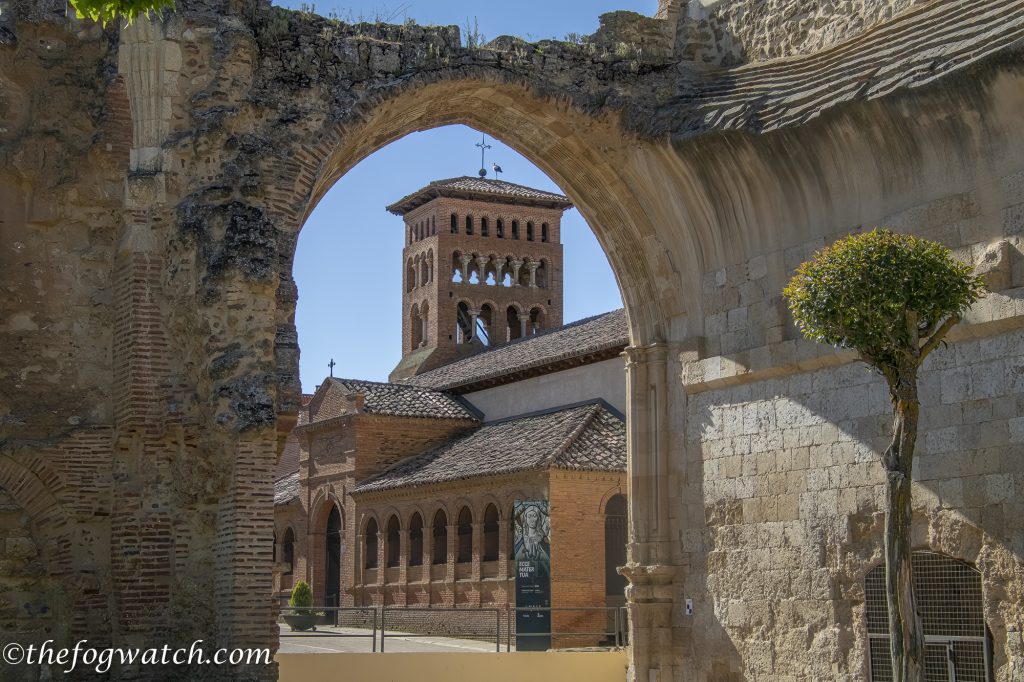
And then it was time. The cab sped quickly along the long, straight road, covering the distance in minutes that would have taken a few hours walking.
I watched as a stork landed balletically on the church rooftop
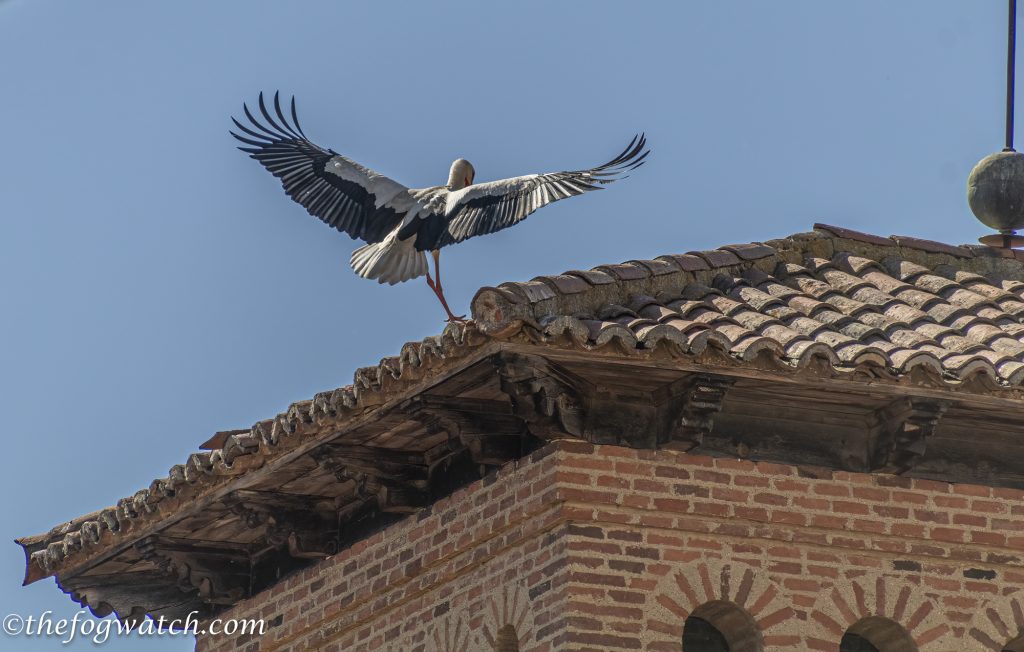
El Burgo Ranero is a truck stop on the Burgos-León highway — and yes, the village is 500metres away. We arrived at a busy interchange of trucks and campervans — a busy yet somehow lonely place of travelers passing through. The day was hot, so we decided not to visit the village but to rest up.
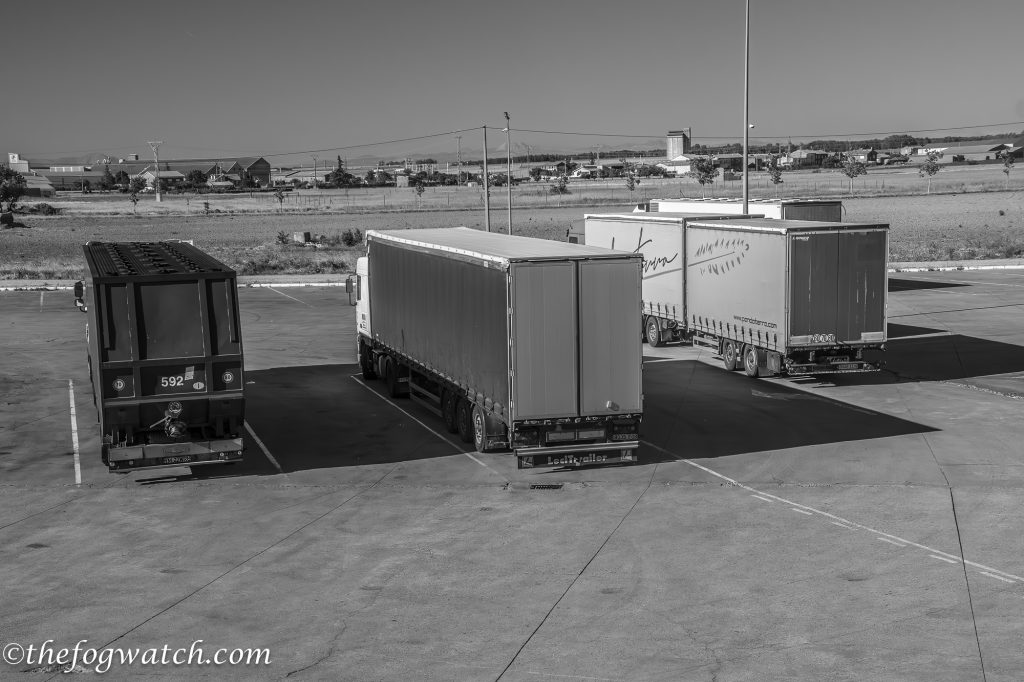
Tomorrow we will take a cab to Reliegos. We considered going through to León, but our aim was to walk part of the Roman road, into Mansilla de las Mulas.
There are no services before Reliegos, and most of the Camino path is alongside the freeway, so we figured it’s better to save our legs for this section.
Arriving early to El Burgo we checked in at our accommodation — clean and comfortable. We had lunch, ordering just as a tourist bus pulled up, disgorging its load of tourists into the transport cafe. So lunch was a while in arriving — understandable as there was only one woman taking the orders and preparing the meals. We waited and wrote in our journals — we are in no hurry. When our food was ready we went over and collected it, and at the end, took our plates and cups back to the counter, as pilgrims often do, and slowly drank our table water and continued chatting and writing.
At length, the passengers rejoined their bus, and the waitress rushed out and cleared the tables. We ordered some tea and a cake, and again collected them, and returned them to the counter when we finished. By mid-afternoon, her shift finished and as she headed for the door, she came over and thanked us profusely — she was quite moved that we had seen the pressure she had been under and that in our way we had given a small kindness. I think it had made her day after dealing with unappreciative customers, each wanting their order immediately.
The name of the town has two possible sources; some say that the local burghers or merchants sold frogs (ranas) for food, others that the place was originally known from its surrounding wheat country as El Burgo Granero — literally ‘the granery city’. Either way, the town has appeared in documents since at least to 1126.
As we went back to our comfortable room with its en-suite bathroom, I reflected on how it was for earlier pilgrims, like Laffi. He wrote in his chronicle that:
“We went to an inn, but it was such a poor one that we had to sleep on the floor, for the inhabitants of the village are all herdsmen, who live in huts roofed with straw.”
And it is likely that the wheat fields surrounding the town have been there in various forms since Roman times and possibly before.
The next morning, Sharon’s leg was not much better, so she decided it would be best to favour it and save her energy for a bit of history coming up. We have both wanted for many years to walk on Roman roads, and a bit of research showed that the Via Romana that passes from Carrion de los Condes to Mansilla de las Mulas on the longest stretch of surviving Roman road in Europe (36km) passes close to our route just outside Reliegos.
So after a quick shower and breakfast, we sought a taxi to take us to Reliegos, where the storied Bar Elvis resides.
A couple of French pilgrims made snide remarks about us getting out of a taxi, to which I reminded them that real pilgrims don’t judge other pilgrims.
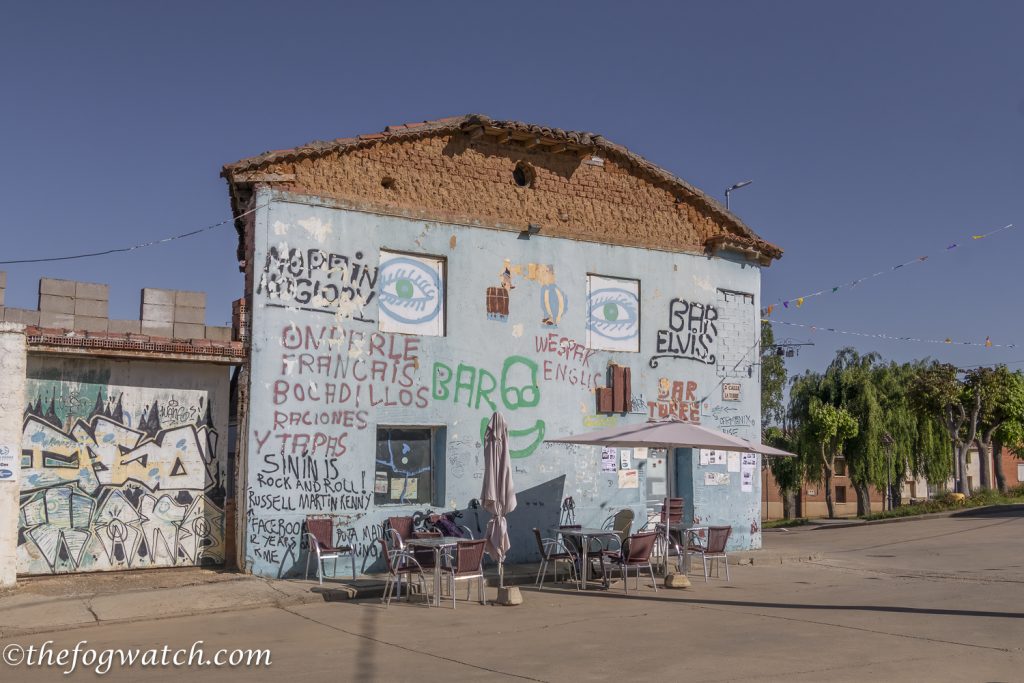
We found the turnoff to the right, walked about a kilometre to the junction with the Roman road, sometimes called Calle Real — the Royal Road., and turned onto it. Isaac Moreno Gallo, the definitive scholar on Roman roads in Spain, has noted that the flat stone topping people normally associate with Roman roads doesn’t apply in rural areas — especially where suitable stone isn’t readily available. They looked then, as they do now, like normal unpaved roads. It was long and straight with a deep ditch on either side — the structure was unmistakable.
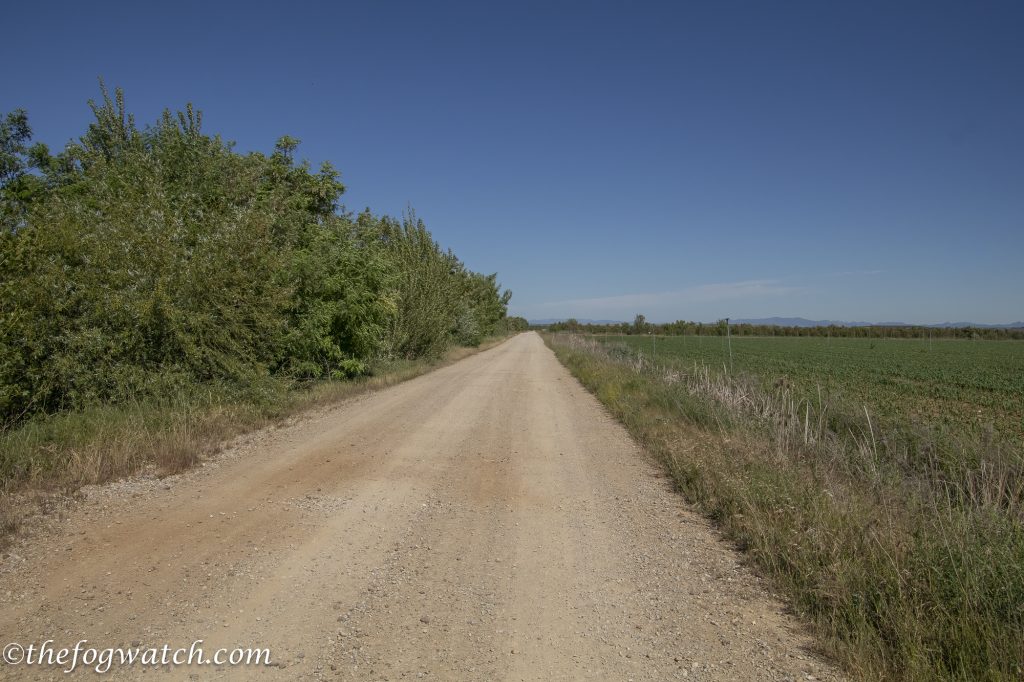
The secret is in the foundations. Where the road traverses the Meseta wheatlands, they are built so well that they still shed water and remain solid when all around is a boggy mess. At one point, I found a culvert with a path used today by farm equipment so that I could get a view of the foundations. The road is still in regular use by the local farming community.
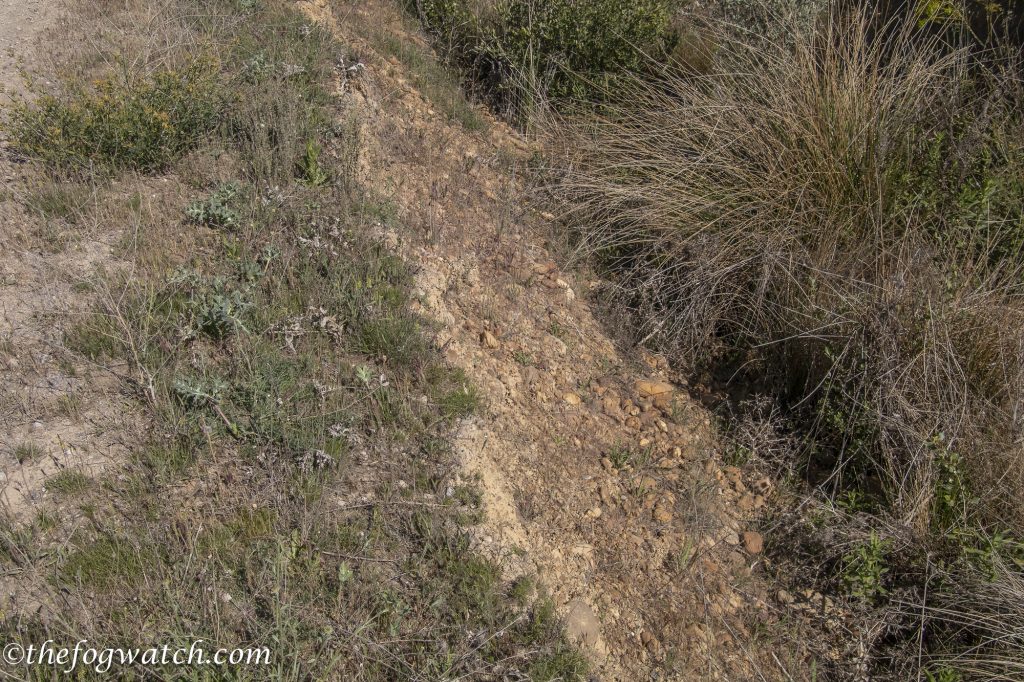
The lower part consists of large rocks with a layer of smaller stones and topped by small gravel, making for a very stable road that does not turn to sticky clay when it rains. This road will still be around long after the freeway has been abandoned and overgrown!
Today was pretty warm, and there was little shade, so it was time to deploy the umbrellas as we walked into Mansilla de las Mulas. We had the road to ourselves for the entire 8kms.
We could see a line of old Camino markers leading off to the side across some fairly scrubby wasteland, but we stuck to the road, which soon became tarmac, and so we entered the town.

Mansilla de las Mulas is named for the Roman mule market, where travellers could trade in or pick up a new ride, before making the final leg into the Roman camp of Legio, which became known as León. Mansilla still retains much of its C12th medieval protective wall, built on Roman foundations and entered via a Gothic gate reminiscent of Mozarabe style.
The wall was a real feature for medieval pilgrims, denoting a safe space where they could find lodging for the night.
Our own lodging was inside and within sight of remnants of the defensive wall, which can be seen behind the cross in the square with its statues of modern pilgrims resting after an arduous journey.
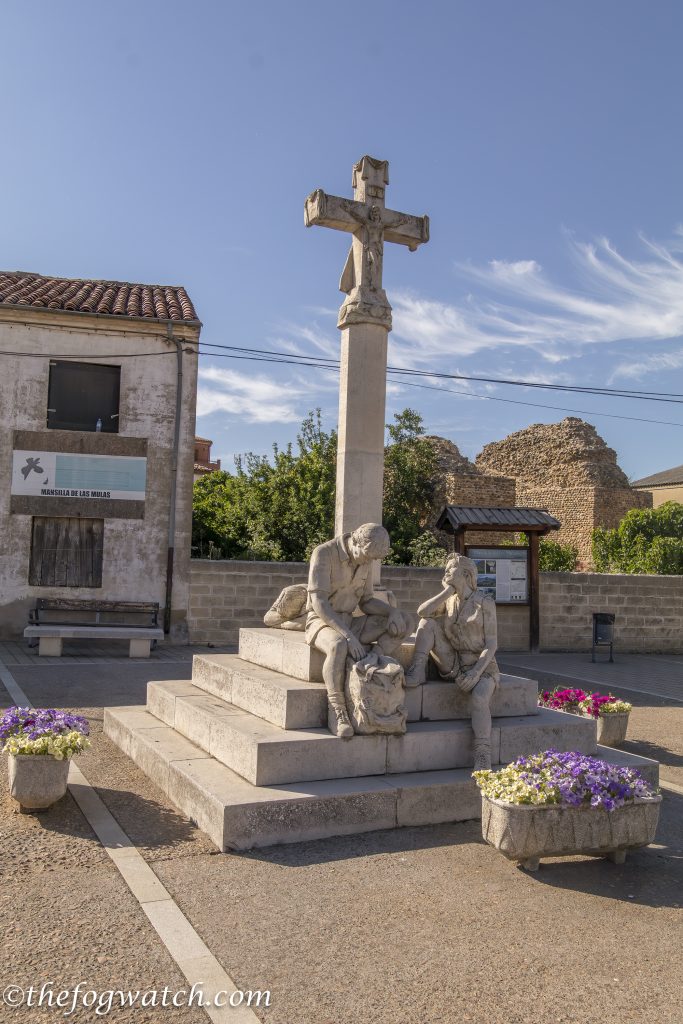
We were just opposite this cross. On the other side, there was another statue of a pilgrim lying down to rest
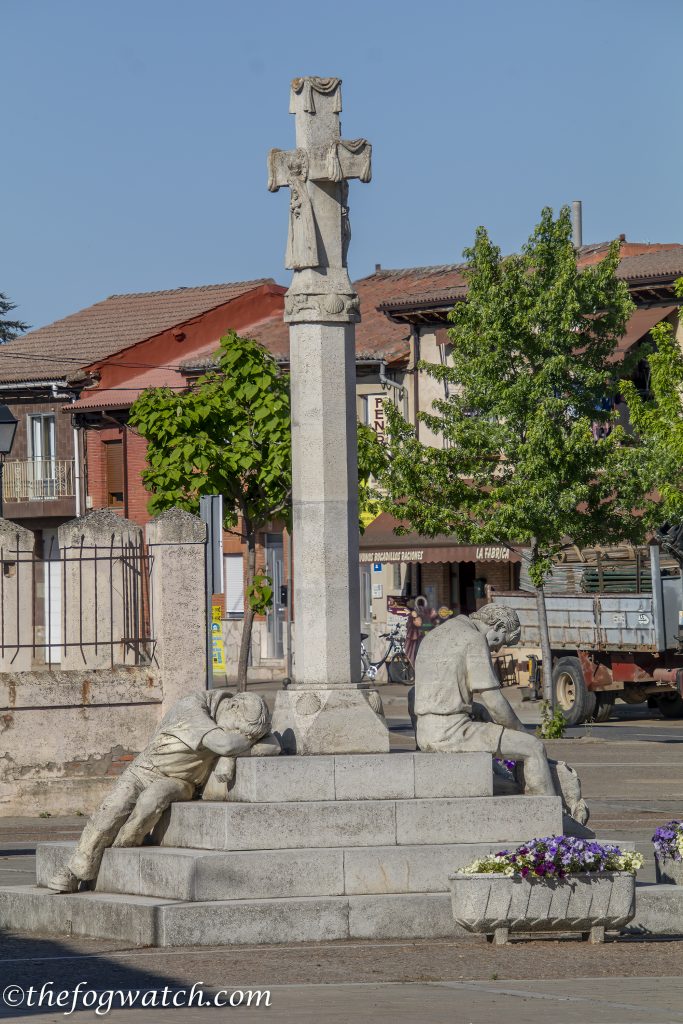
Once we had checked in, we decided to explore, and found a delightful and colourful church with striking red brickwork
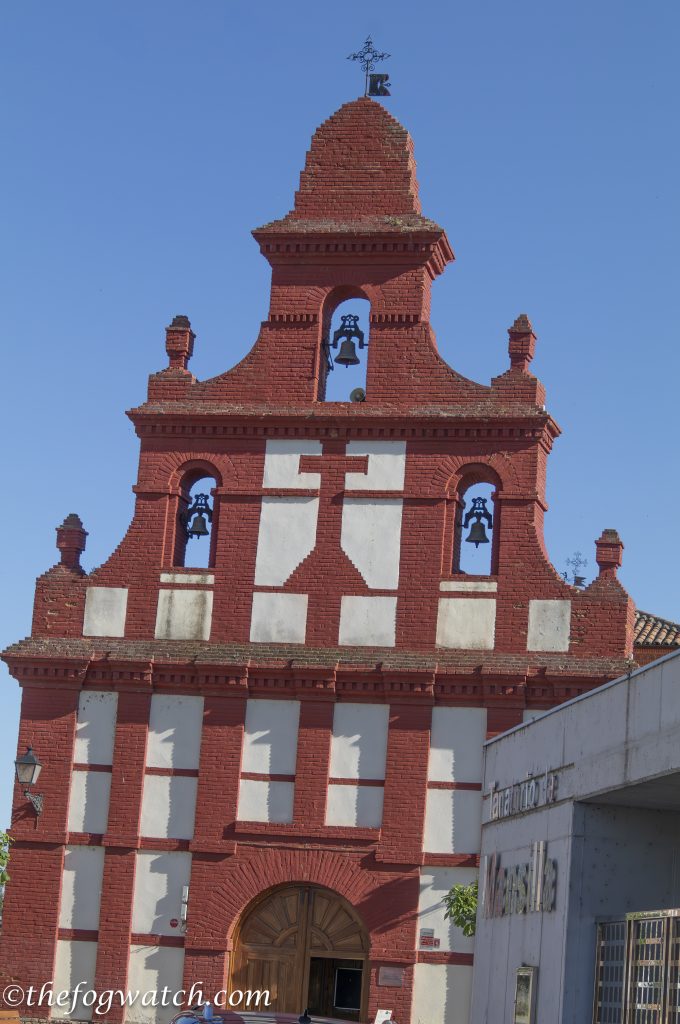
and inside was also quite spectacular.
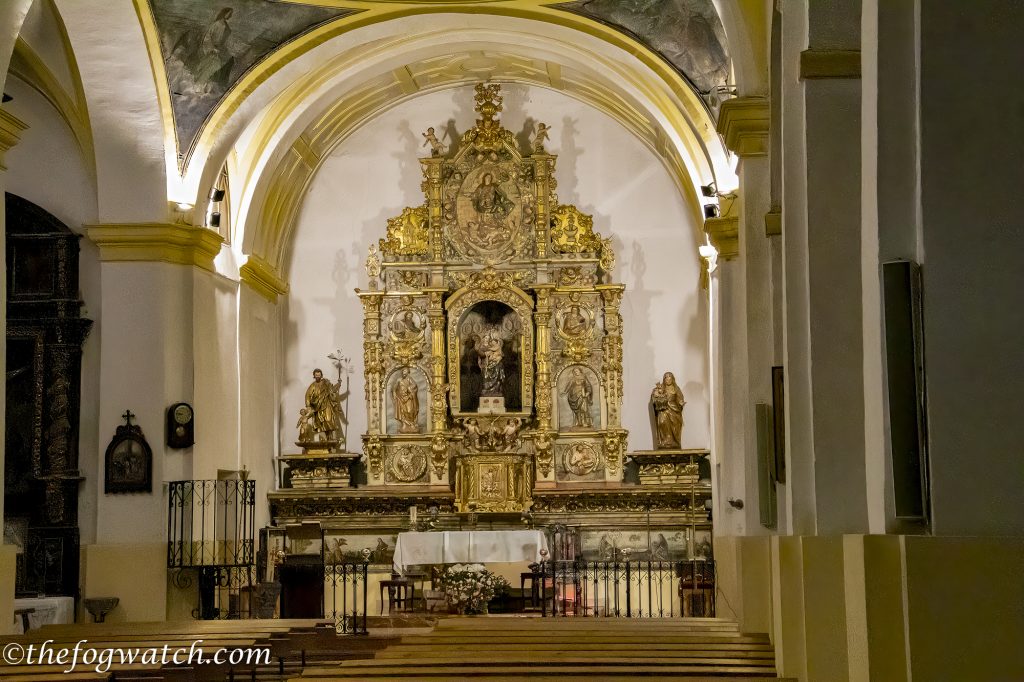
The gilded retable was skilfully carved and decorated with a micron-thin layer of gold leaf.
Outside another church stood a statue of St James dressed as a pilgrim. We had dinner with a wonderful Austrian couple Katja and Joseph — and another great Camino conversation
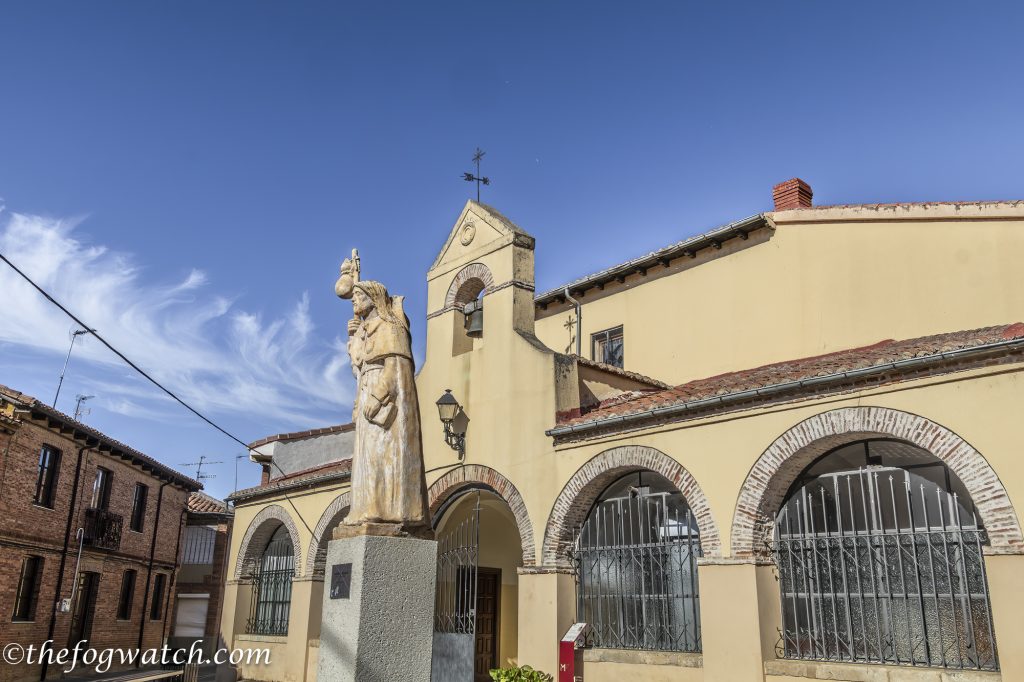
I’ll leave this here ahead of our walk into León with a parting look at the ancient town wall with its pointed castellated battlements. I’ll pick up the story again after a break from this blog while we once again return to Spain and other parts of Europe to walk the French route once more (4th time). Until our return, Buen camino!

